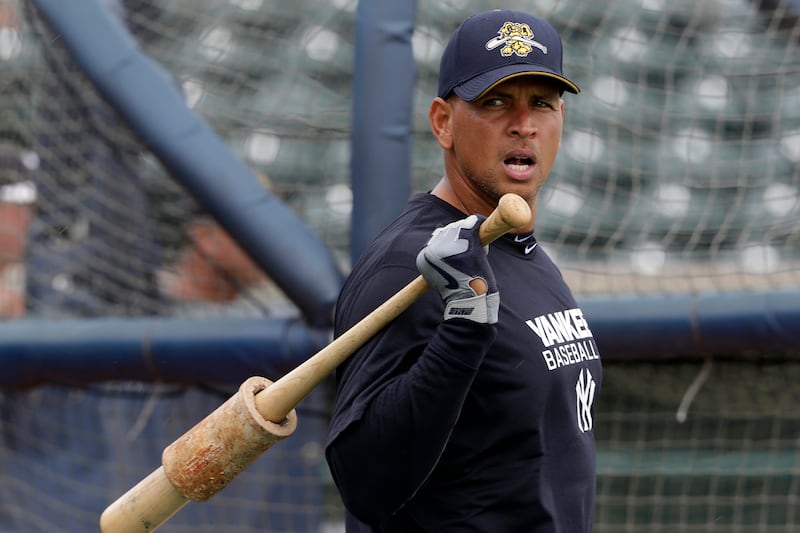It appears that Major League Baseball is just about ready to give New York Yankees star Alex Rodriguez the boot, possibly for life. Although everything is at the rumor-only stage, accusations persist that A-Rod used human growth hormone, a performance-enhancing drug, obtained from the Biogenesis enterprise formerly headquartered in Coral Gables, Fla.

Setting aside whether Rodriguez is guilty or innocent, it’s fair to ask where all the excitement about HGH comes from, as well as where, in the cosmology of illegal performance-enhancing substances, it sits. First of all, HGH is not a steroid, though the term “steroid” has come to be used interchangeably and incorrectly with PEDs. Steroids and HGH are both hormones—in this one aspect there is a similarity—but steroids are produced by the body to promote sexual differentiation, while HGH is involved in growth and maturation. Male hormones, androgens such as testosterone, make a guy a guy, horny and pimply and restless—and muscular. Jumping higher and running faster are possible as well. It clearly enhances performance, as the beneficiaries of baseball’s last PED scandal, related to the Bay Area Laboratory Co-Operative, realized. But not only do anabolic steroids increase athletic performance, they also increase a person’s risk of stroke, heart attack, and any number of bad-news illnesses. Stopping their use was a must.
Compared to ’roids, HGH is a relatively sedate amino acid, something people produce throughout life. Its effects are dramatic when levels are way too high or way too low. A common cause of dwarfism is an inadequate production of HGH. Its medical availability has made the diagnosis rare in countries with resources to diagnose and treat—the cost can run in the thousands of dollars per month. Others who, because of a tumor in the pituitary gland, may overproduce HGH develop a different problem: gigantism. Called acromegaly in medical parlance, it produces tall, gangly people ready for the basketball court, with thick jawbones and too-wide foreheads, as well as teeth that begin to spread apart as the lower jaw spreads. (Be on the lookout for older athletes with braces on their lower teeth.) A list of notable people who may have had acromegaly includes Lurch from The Addams Family, André the Giant, Jaws from the Bond movie The Spy Who Loved Me, and perhaps Abraham Lincoln.
HGH until recently had an enormous advantage over steroids—it could not be detected. Now, with science moving ever forward and professional sports collective bargaining agreements accepting the need, HGH can be detected. But HGH is peculiar among PEDs in that, similar to deer antler spray, there is no evidence it helps athletic performance. The often-cited study looking at the effect of growth hormone on athletic performance was published in 2008 in the prestigious Annals of Internal Medicine. The authors pulled together the world’s literature up to that point—27 studies comprising 303 persons, mostly healthy young men, who received HGH—and reviewed the results. Researchers had measured biceps and quadriceps strength and endurance, body mass index, exercise capacity measured by speed and power, and indicators from blood samples of energy metabolism.
The studies found exactly no benefit, not even a tiny little maybe one. Yes, it makes a fellah look the part, with bigger muscles and less fat, but if anything HGH makes a guy feel more tired and leads to fluid retention in the face, hands, and ankles. In addition, it can lead to uncomfortable conditions such as carpal tunnel syndrome and other aches and pains. So why the rush to take an illegal substance that can make you look marvelous but does nothing for your home-run swing—and can lead to your eventual dismissal from the game you play so well? Are athletes really that dim?
Well, that’s where the limits of the 2008 study start to show. We have no clue about three basic and important features of the alleged Biogenesis drug trafficking: how big and how frequent a dose the athletes were taking and for how long. The young male volunteers in the medical reports mentioned in the study took relatively tame doses for a relatively brief period. By contrast, if the accusations are true, A-Rod and the others involved with Biogenesis have been taking the drug for years, and at doses unknown to anyone—except perhaps Anthony Bosch, former proprietor of Biogenesis, whose feckless denials are classics of the form. It is likely that at the doses and frequency of administration that the pros use, there is a meaningful benefit.
One seldom-discussed feature about HGH is that, despite the hoopla, it isn’t really that dangerous. Unlike steroids, which make a guy crazy, HGH is mostly a quality-of-life downer. It can deform a face, rarely cause diabetes, and make a person uncomfortable, but it doesn’t push anyone over the edge in a ’roid rage, it doesn’t shrivel the testicles, it doesn’t make a person more annoying than the horniest frat guy you’ve ever been around.
So why is Major League Baseball apparently so determined to throw the book at A-Rod and the rest of the Biogeniacs for a maybe-effective drug with troublesome but not life-threatening side effects? Surely it is not that they really are worried about the health of their employees. Players routinely are pushed and pulled, kneaded and given cortisone shots to get that sprained shoulder ready. Anything for the next big game—we’ll worry about crippling arthritis and joint replacement and all the rest some other decade.
And it’s hard to believe that commissioner and former owner Bud Selig, and Fred Wilpon and Little Steinbrenner and all the other team owners, are of such high ethical standards that the mere hint of impropriety is enough to cause conniptions and suspensions. I suspect that they enjoy the easy breeze of the sanctimonious high road, the sense that they are contributing something, finally, to the common good. But if that indeed is their goal, then I have a very immodest suggestion: extend the ban to the owners. Just as a family who serves alcohol to someone who crashes a car while subsequently driving under the influence is liable for the accident, so too should the owners be tossed or fined when one of their employees is caught cheating. To fix the problem, it will never be enough to simply slap down the guy caught cheating, no matter how despicable he might be. Rather—to use a corporate boardroom language they all know so well—the boss too must be held accountable for his employees’ actions. Any other approach is sure to whiff.






